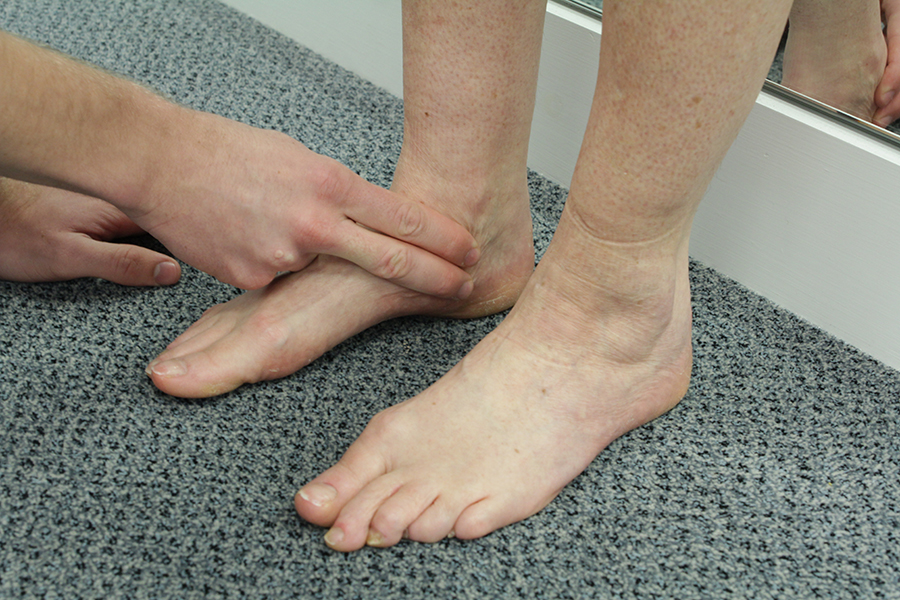

Sometimes the doctor may advise a bone scan. X-rays usually miss small skeletal traumas such as stress fractures. Inability of the injured part to bear weight.Restrictions in the range of motion of the injured area.While this may produce pain, it helps locate the injury and any structural abnormalities. The doctor usually presses and squeezes - palpates - the injured area. He or she will evaluate visible signs of injury such as tender skin, swelling, and differences in joint mobility or appearance. The doctor will focus on the injured area, comparing it to the uninjured leg or knee. In analyzing the questions above, your doctor may be able to diagnose your injury strictly on the basis of a physical exam. Are you susceptible to stress fractures due to a known condition such as osteoporosis, anorexia, or obesity?.Where did the injury occur, and under what circumstances? Stress fractures are closely associated with particular sports and activities, such as basketball, aerobics, and running.What did it feel like at the time of the injury? With stress fractures, patients are usually unable to identify a precise moment of injury, but they see a pattern of recurring pain in a particular area.Have you injured this part of your body before? This helps the doctor identify a chronic weakness or the likelihood of further problems.What was new after the injury? With stress fracture, there is likely to be localized pain and tenderness.What happened? This helps determine the mechanism of injury.What hurts? This helps identify the affected area.The doctor will want to know the following:


The doctor will physically examine the injured area, determining the cause of your discomfort. When you visit your physician with pain in the lower leg or knee, you will be asked questions about your injury and medical history. Even acute fractures usually have little displacement when they occur in a metatarsal bone. Acute fractures may result in inability to put weight on the foot, swelling, and more severe pain. It is uncomfortable when pressure is applied to the small area surrounding the site. General symptoms of a stress fracture include a sharp pain while walking and mild swelling, in the affected area. Symptoms of Stress Fractures of the Leg and Foot? In sports like tennis, track and field, gymnastics and basketball, the repetitive pounding of the foot on the ground can cause stress fractures of the foot and leg.

Though 50 percent of stress fractures occur in the lower leg, stress fractures can happen to any bone in the body. Common sites for stress fractures in the leg include the tibia and fibula. In the foot, stress fractures usually are in the metatarsal bones in the ball of the foot, especially the second. Stress fractures occur as a result of repetitive overuse. After time and healing starts to occur, the bone repair process shows up. Some fractures, called stress fractures, are microscopic, and because they are not displaced (when the bone has shifted its position), they cannot initially be seen on regular x-rays. What is a Stress Fracture of the Leg and Foot?Ī fracture (or broken bone) is a disruption, or break, in a bone.


 0 kommentar(er)
0 kommentar(er)
